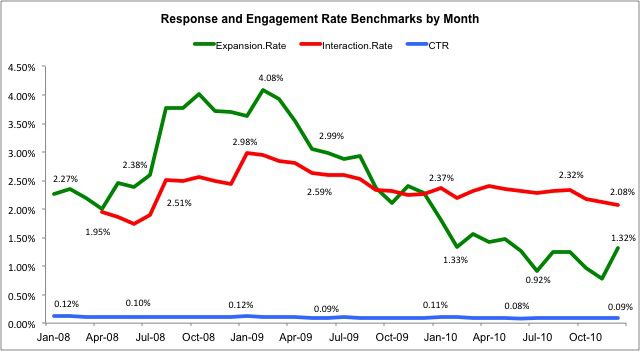
Everyone knows now that touchscreen tablet devices are seeing great engagement from users. Last year, I reported engagement times for some news apps of 30 to 34 minutes, including five times more page views than desktop web. Since then, media sites like BBC Online and USA Today have overhauled for swipeability.
So how are advertisers taking advantage of the trend publishers have noticed? Nearly 12 months ago, Google’s AdMob launched a range of swipeable new ad formats for websites on tablets, including galleries and instant video.
Since then, the noise has gone fairly quiet, and I haven’t exactly noticed an overwhelming volume of new native tablet ads. But now, Google is letting out some data on one of the new formats’ first clients. A swipeable gallery ad campaign run by air carrier Finnair in six European countries found…
- More interaction: Finnair’s campaign was interacted with in five percent of all impressions. That is far higher than conventional web display campaigns. Turns out, it is more than twice the 2.37 percent interaction rate seen by Google’s DoubleClick ad network before iPad arrived in early 2010.
- More clicks: What about actual clicks through to an advertiser site? Again, the tablet-native formats have seen better results. Of the five percent of users who interacted with Finnair’s ad, 60 percent clicked to take part in a competition, while 12 percent clicked through to Finnair’s website, Google says.

Bear in mind that Finnair’s campaign, which Google is relaying this week in a published case study, is likely one of the most successful it has seen since launching the new formats in December 2011. I would like to see a lot more evidence than just this.
But even more muted success than Finnair’s would likely point to increased effectiveness over conventional web display at a time when web display advertising is being questioned. “The banner is about to die and is already cratering,” BuzzFeed founder Jonah Peretti said during an industry conference earlier this month.
There is nuance here, however. While a higher proportion of users clicked to enter a competition within the ad, far fewer actually made it through to Finnair’s website, suggesting that much of the interactive energy for fancy tablet ads may best be served in the ad unit itself. Alternatively, it may be that few users were ever likely to respond on the spot to Finnair’s “Book flights now” call-to-action button.
Google put no numbers on actual purchase conversion from the ad and Finnair says the campaign’s main goal was awareness raising.